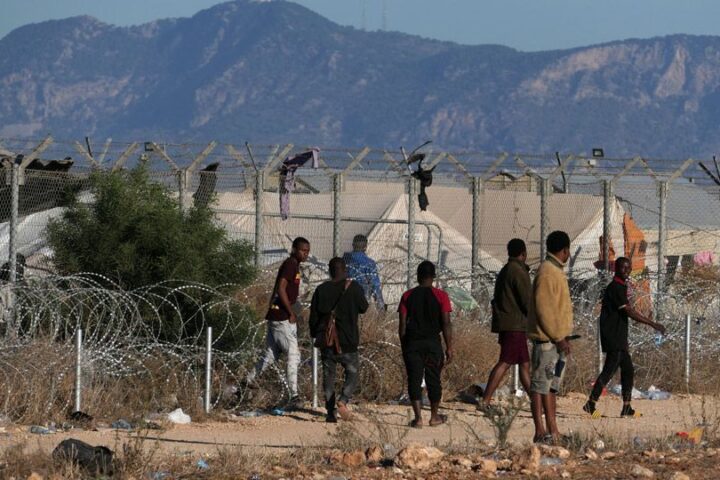As we approach the end of 2019 it is always a good idea to look back at the year, evaluate the performance of our economy, but at the same time consider what lies ahead in the New Year. What are the prospects, opportunities, as well as risks for 2020?
The year that just passed has been a continuation of the trend that we have experienced the last few years – high level of growth in real GDP, decreasing unemployment, budget and primary surplus for the general government, and a gradual reduction in the level of NPLs for the banking sector.
At the same time, the level of public debt is back on its downward trajectory after a year (2018) of a sudden increase due to the one-time investment by the government in the Co-op bank. However, will this trend continue for the next year? What are the risks that could derail us from this path?
The expectation is that this positive trend will continue for 2020 – still high levels of growth (albeit smaller than previous years), decreasing unemployment that will get close to levels of full employment, continuation of the high level of primary surplus, decreasing levels of public and private debt, and further reduction in the level of NPLs in the banking sector through mainly sale of problematic loans to third parties.
One has to take into account the risks and how those could affect performance and deviate the outcome from the above expectations. An easy way to approach this is by distinguishing between internal and external sources.
Internal Sources of Risk
- One source of internal risk is the pending decision by the Supreme Court regarding pay cuts of civil servants during the crisis period. This is certainly a serious issue, not only because of the magnitude of the amount in question, but also the effect that this can have on other groups of employees that were also negatively affected in terms of pay cuts during the crisis years. In general, I would argue that there is a growing trend for excessive demands from union officials as if we have forgotten completely what happened to our economy a few years ago. This is true whether it has to do with employees of the general government, semi-governmental organisations such as CYTA or EAC, teachers in primary and secondary education, or bank employees
- Another potential source of risk is the implementation of the National Health System (GESY). During the summer we are moving towards full implementation of the system and many obstacles still need to be overcome such as the autonomy of state hospitals (a pre-requisite for a well-functioning GESY). How that will affect the public finances, remains to be seen.
- The problems that still affect our banking sector and how those will play out during 2020 is another potential risk – still high levels of NPLs compared to other EU countries, low level of profitability, high level of operational costs, low-interest rate margin, excessive liquidity that is too expensive for the banks to handle due to the negative interest rates imposed by the ECB, inability to provide enough loans to the market, increasing competition from non-bank institutions.
- A potential slowdown of the construction industry that has been fueling the growth of the economy in the last few years. This risk has to do also with the recent changes in the “investment” programme (or “golden” passport scheme). The stricter conditions imposed by the government (which were necessary and should have been imposed a long time ago) might potentially lower interest in the programme which will have a negative impact on the construction sector.
External Sources of Risk
- The biggest threat right now for global markets has to be geopolitical risks. The trade war between the US and China has been going on for almost two years and in the process around $750 bln of goods have been exposed to tariffs and other protectionist measures. Other major partners of the US have also been affected by this shift in US policy (Europe, Canada, Mexico, Japan) since the election of President Trump and his promise of “America First”. Protectionist measures are affecting world trade and subsequently the growth of the global economy. Cyprus, an open economy, cannot remain untouched by these developments.
- The never-ending Brexit story and how it will eventually play out is causing unrest in financial markets and the real economy. The win of Boris Johnson in the recent election brought signs of relief that Brexit will be done soon with a deal. However, his later efforts for the implementation period to end in December 2020 with no extension if needed, caused further worries and negative outlook for the UK, European, and global economy. Cyprus is and will be affected by Brexit for many reasons given the close ties with the British economy.
- The “low to negative interest rate environment” that we have been experiencing in recent times is another cause of concern for the global markets and disrupts financial markets. This looks like the norm now and is expected to continue for some time (at least until inflation picks up and reaches acceptable standards). Central banks are stuck in a way since they have used all possible monetary tools. This is the reason that they are urging now for more fiscal expansion as a way to promote growth despite the need to lower the level of public debt in many countries. The effects of this interest rate environment are evident in Cyprus as well through the banking sector.
- Lastly, one cannot ignore the tensions that exist with Turkey and their unlawful interference in Cyprus’ Exclusive Economic Zone (EEZ). This creates an obstacle to any form of foreign investment as it adds to the country risk. It can also affect negatively Cyprus tourism, a pillar of the economy.
I attempted above to provide an assessment of what we should expect for next year but also highlight some of the risks that we need to consider, whether internal or external. This list is by no means exhaustive, but it includes what I would consider the most important sources that we need to evaluate and manage.
The writer is an Associate Professor of Finance and the Director of the MSc in Financial Services at CIIM-Cyprus International Institute of Management










